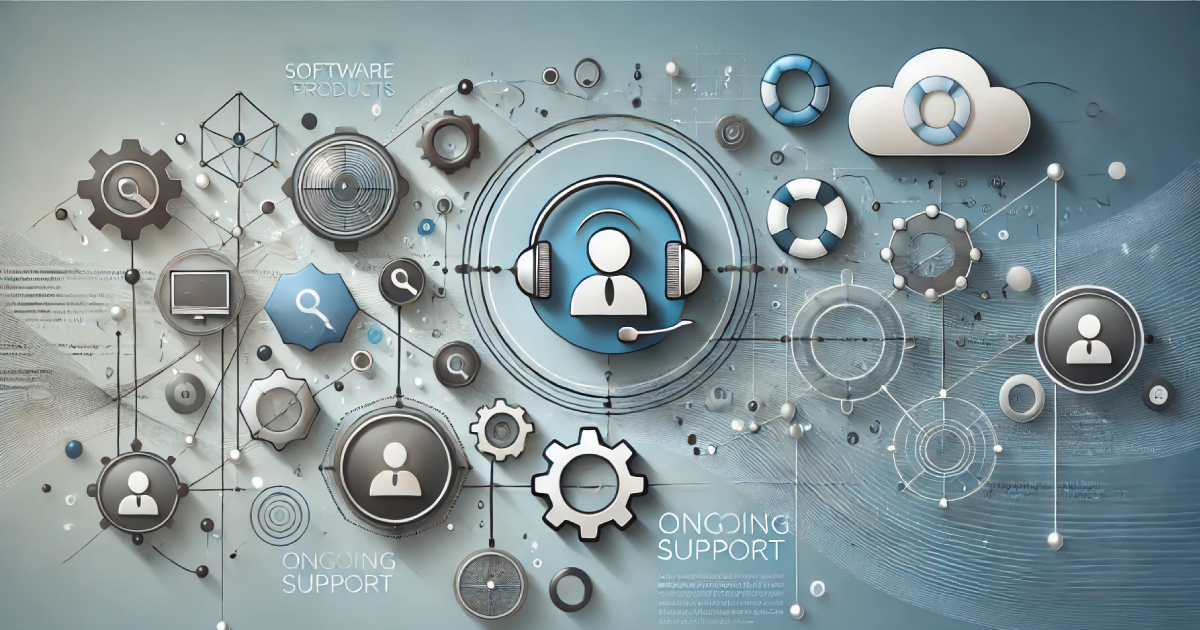What is ongoing support?
Ongoing support refers to the continuous help and maintenance provided after a software product is up and running. This can encompass:
- Technical Assistance: Help with fixing bugs, resolving errors, and troubleshooting.
- Updates and Upgrades: Regular enhancements that boost performance, add features, and strengthen security.
- Training and Documentation: Continued user training and access to up-to-date manuals.
- Customization and Optimization: Fine-tuning the software to suit changing business needs.
- Performance Monitoring: Ensuring the software continues to run smoothly and efficiently.
Why Ongoing Support Matters
Maximizing Software Value
- Making the Most of Features: Software can have a steep learning curve, and ongoing support helps teams fully understand and leverage its features.
- Adapting to Change: As businesses grow or change direction, software needs may evolve. Support ensures the software adapts alongside these shifts.
Enhancing Security
- Staying Protected: Cyber threats evolve constantly, and regular security patches are key to keeping data safe and secure.
- Meeting Compliance: With regulations frequently changing, ongoing support helps businesses stay compliant, reducing the risk of penalties.
Boosting System Performance
- Quickly Resolving Problems: Issues can disrupt business operations. Ongoing support helps resolve them fast, minimizing downtime.
- Maintaining Efficiency: Over time, optimization is crucial to keep systems running at their best, and support helps with this.
Facilitating Updates and Upgrades
- Staying Up to Date: Software needs regular updates to remain relevant and secure. Support ensures these updates are applied seamlessly.
- Managing Compatibility: As technology changes, compatibility with other tools may become an issue. Ongoing support helps navigate these challenges.
Providing User Support and Training
- Onboarding New Users: As your team grows, new hires need to get familiar with your software. Support provides training and guidance to ensure a smooth transition.
- Answering User Questions: Users often need help with specific features, and support is there to provide timely answers.
Ensuring Business Continuity
- Preventing Downtime: Unplanned downtime can be costly. Ongoing support works to prevent and address potential issues before they become major disruptions.
- Disaster Recovery: In the event of a system failure, ongoing support includes disaster recovery planning, helping get systems back online swiftly.
Customization and Scalability
- Growing with Your Business: As your company expands, software may need adjustments to accommodate new workflows, users, or features. Ongoing support ensures smooth scalability.
- Implementing New Features: When you need to add new functionalities or modules, support assists with the integration process, keeping the software aligned with business goals.
Choosing the Right Support Partner
To ensure you get the most from your ongoing support, consider these factors when selecting a provider:
- Expertise: Look for someone with deep knowledge of your software and industry.
- Responsiveness: Make sure they can address issues quickly and efficiently.
- Comprehensive Services: Ensure the provider offers everything from technical help to training and customization.
- Reputation: Check reviews and feedback from other clients.
Conclusion
Ongoing support is a cornerstone of effective software management, ensuring your investment continues to pay off well beyond the initial deployment. By offering technical assistance, security updates, system optimization, and user training, it maximizes the benefits of your software and supports your business’s long-term success.
For companies looking to fully optimize their software investment, ongoing support is not just an option—it’s a must. To explore how continuous support can benefit your business, get in touch with Fonseca Advisers today for expert advice.






